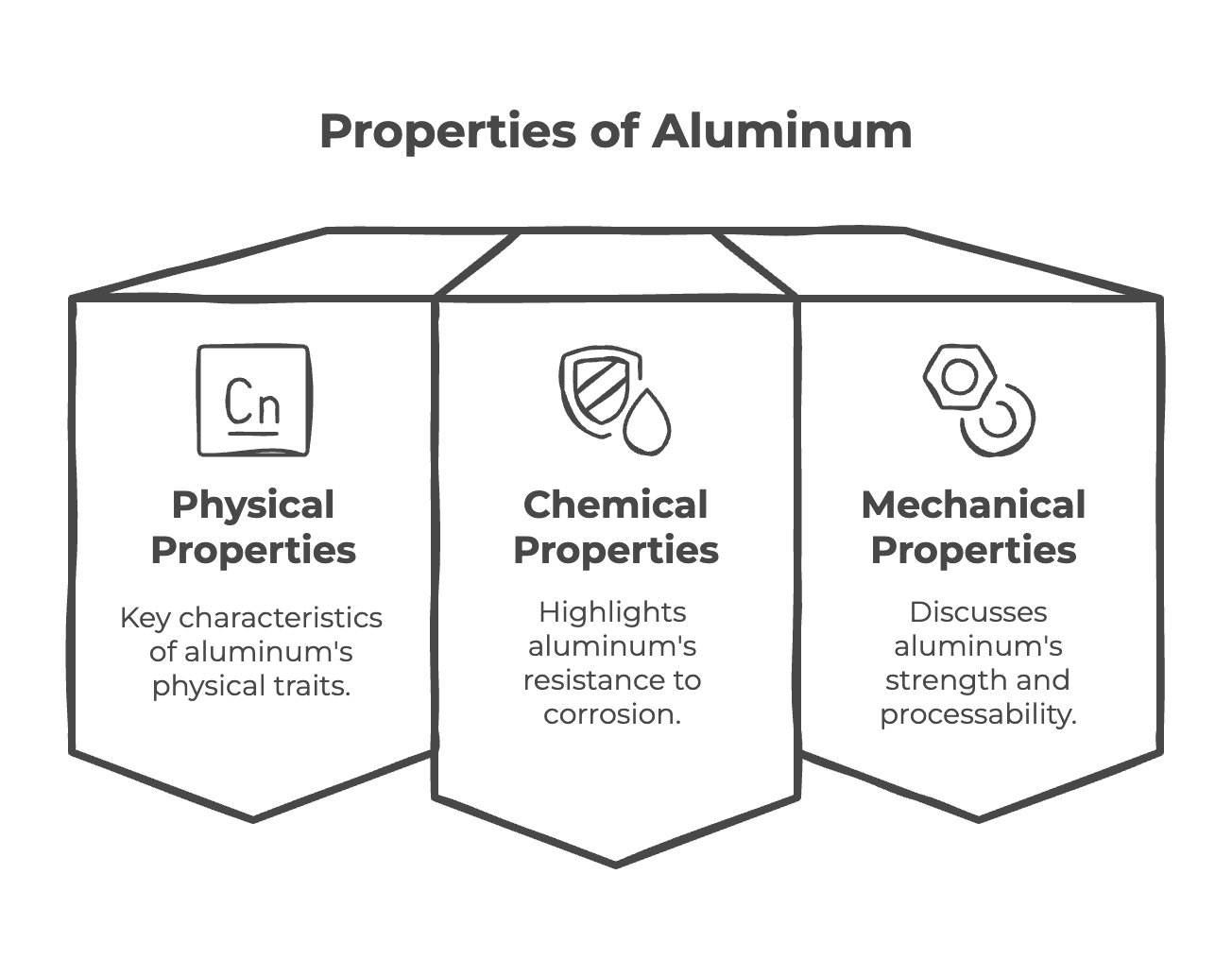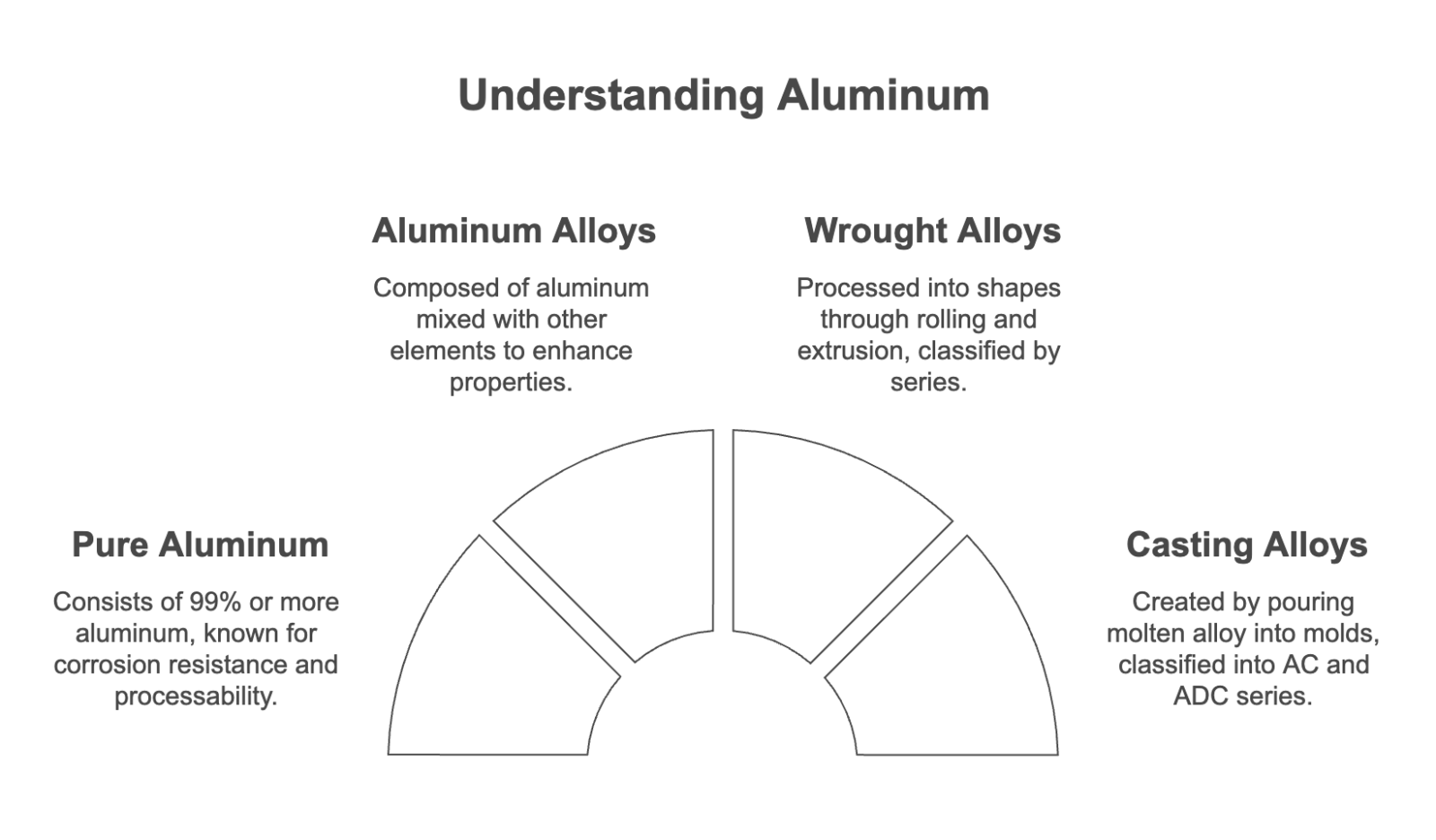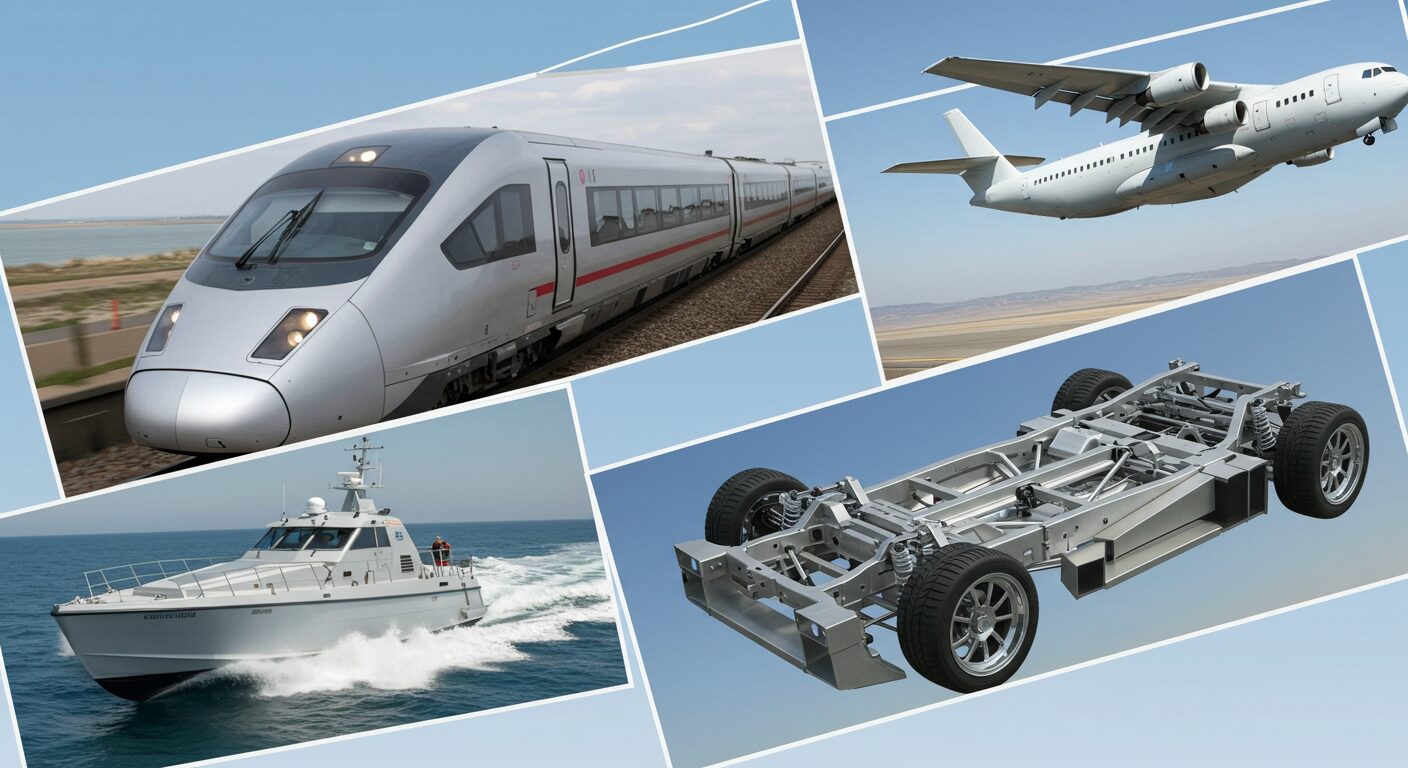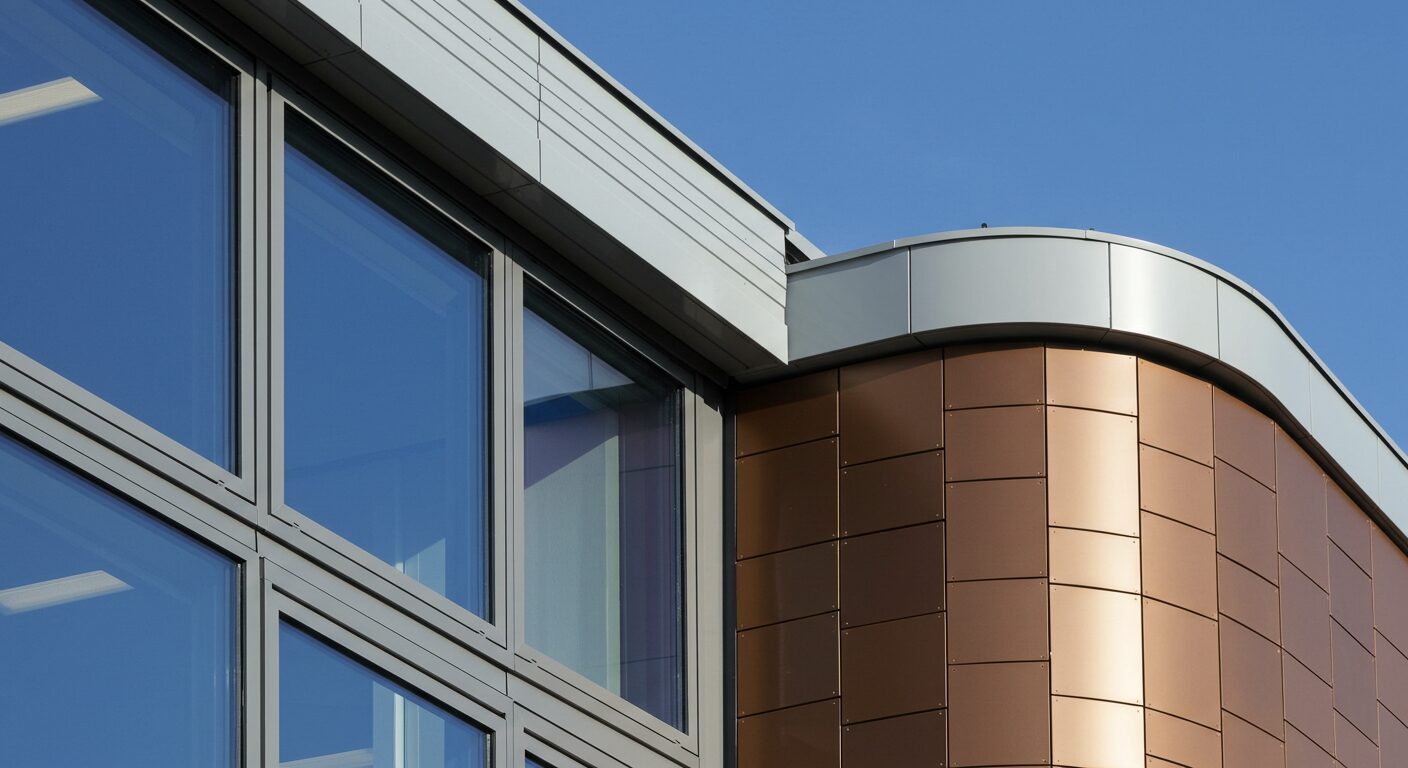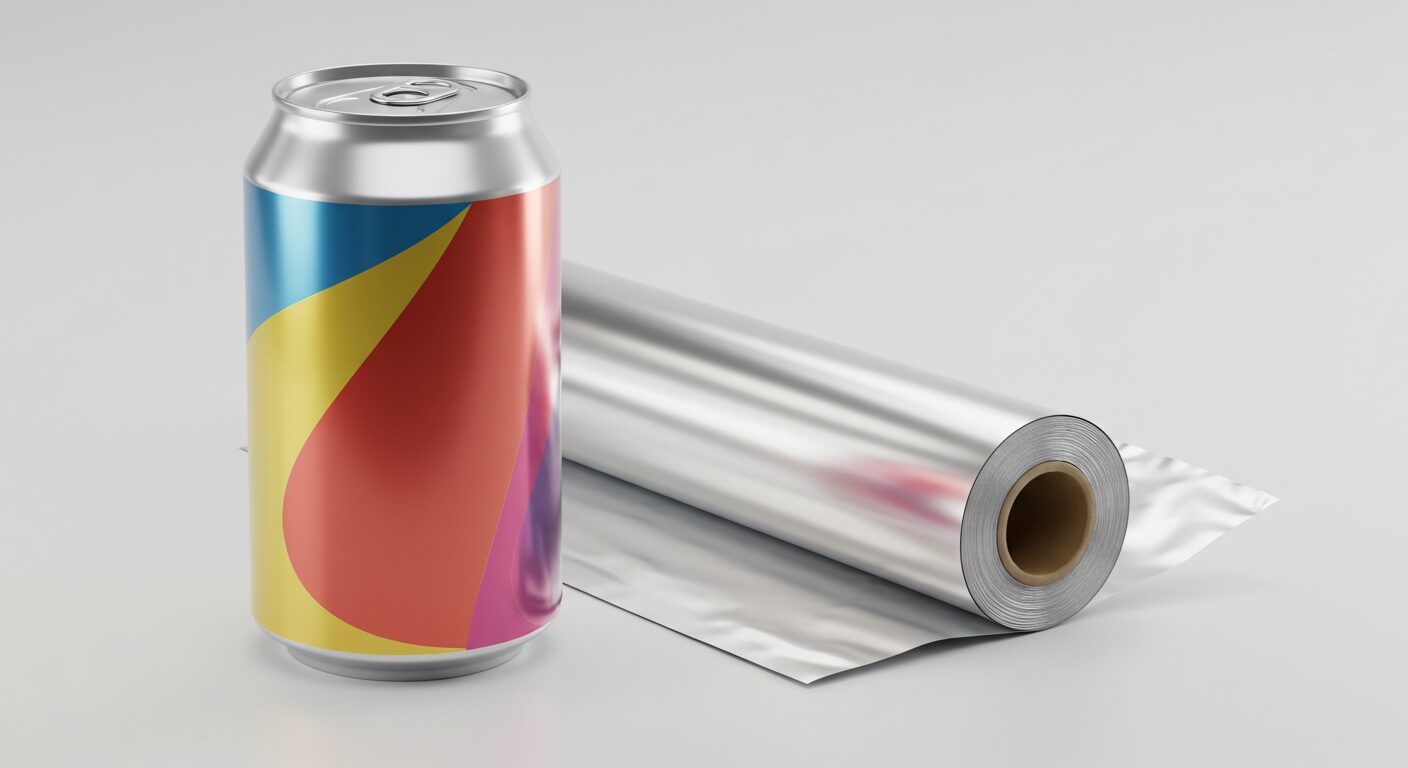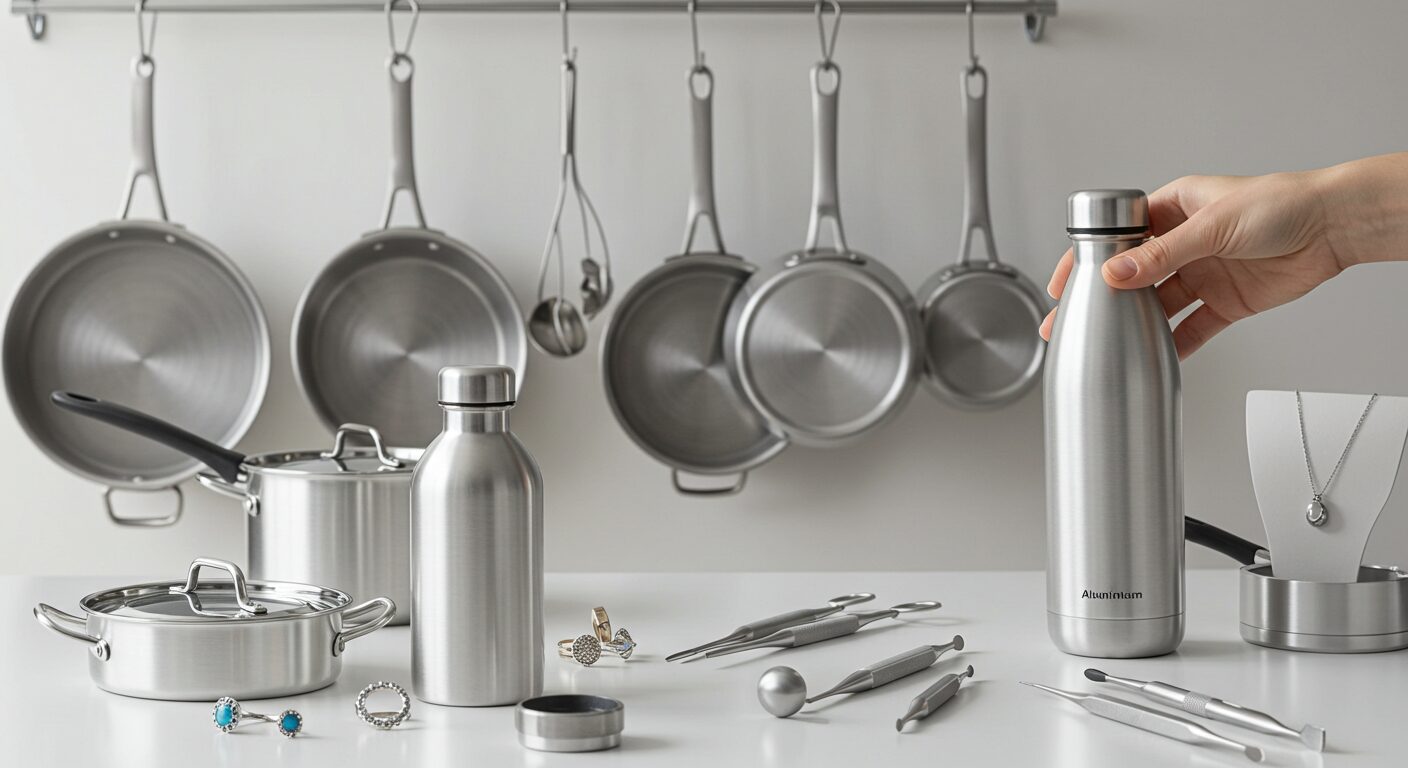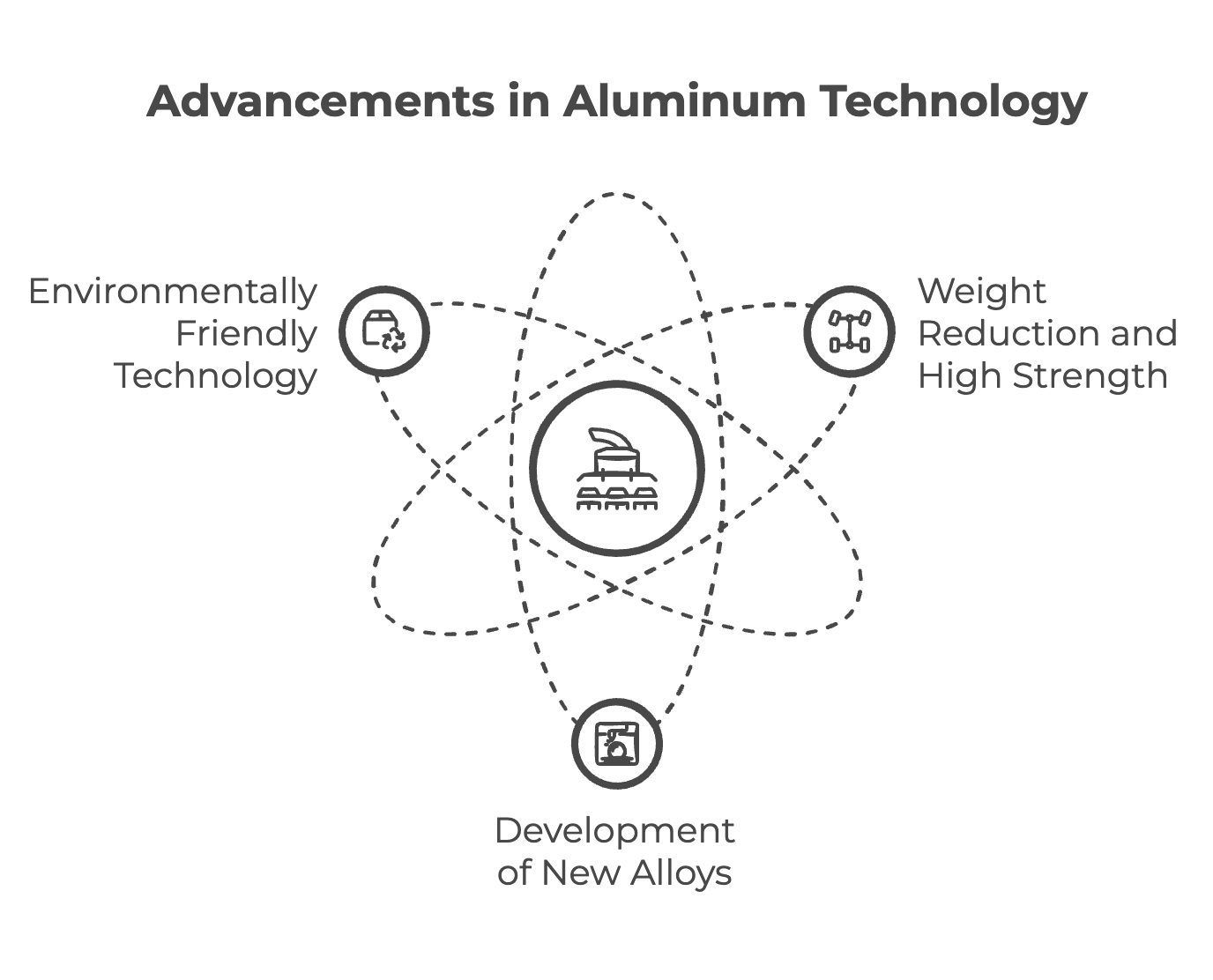◆Table of contents
ToggleIntroduction: What is Aluminum?
Looking around us, aluminum is used in a wide variety of places, from smartphones, personal computers, automobiles, airplanes, to building window frames. Aluminum is a metal material indispensable in modern society because it is light, strong, and easy to process.
In this article, we will explain in detail the properties, types, and uses of aluminum as basic knowledge of aluminum. We hope that you will deepen your understanding of aluminum as a material and feel its potential.
Aluminum Properties
Aluminum is used in various fields due to its diverse properties. Here, we will explain the representative properties of aluminum.
Physical Properties
The most prominent property of aluminum is its lightweight. Its specific gravity is 2.7, which is about 1/3 of iron and about 1/3 of copper, greatly contributing to the weight reduction of transportation equipment.
It also has excellent thermal conductivity, with a thermal conductivity about three times that of iron. Taking advantage of this property, it is used for parts that need to efficiently transfer heat, such as engine cylinder heads and heat sinks.
Furthermore, its electrical conductivity is as high as about 60% of copper, and because it is lightweight and conducts electricity well, it is used in fields that need to efficiently transmit electricity, such as power transmission lines and cables.
Being non-magnetic is also one of the important properties of aluminum. Because it does not become magnetized, it is used in products that want to avoid the effects of magnetic fields, such as medical equipment and precision equipment.
In addition, aluminum has a relatively low melting point and excellent processability. It also has high malleability and ductility, and can be processed into various shapes, so it is used in a wide range of applications such as building materials and packaging materials.
Chemical Properties
Aluminum is also known as a metal with excellent corrosion resistance. In the air, it reacts with oxygen to form a dense oxide film (alumina) on the surface. This oxide film acts as a protective layer and protects the internal aluminum from corrosion, making it ideal for products used in harsh environments such as building materials and marine development.
Mechanical Properties
Pure aluminum is a soft metal, but its strength can be greatly improved by alloying. Some aluminum alloys have strength comparable to steel. Taking advantage of this property, it is used in fields that require high strength and lightweight, such as aircraft and automobile structural materials.
In addition, aluminum has excellent processability and can be easily processed by various methods such as rolling, extrusion, and casting. Because parts with complex shapes can be manufactured relatively easily, it is used in a wide range of industrial fields.
Summary of Properties: Relationship with Applications
| Property | Application Example |
|---|---|
| Lightweight | Transportation equipment (automobiles, aircraft, railroad cars, ships) |
| Thermal Conductivity | Engine parts, heat sinks, air conditioners |
| Electrical Conductivity | Wires, cables, electronic parts |
| Corrosion Resistance | Building materials, marine development, food containers |
| Strength | Structural materials, machine parts, tools |
| Processability | Building materials, packaging materials, daily goods |
Aluminum plays an active role in various fields by combining these properties.
Citation Source
- What is Aluminum? Characteristics of the Material, Precautions for Use, Comparison with Other Metals, etc. – meviy – MISUMI: https://meviy.misumi-ec.com/
- Characteristics and Machining Points for Each Type of Aluminum Alloy – SakuSaku EC: http://sakusaku.com/
- The Amazing Properties and Uses of Aluminum: https://www.kato-works.co.jp/eng/
- [Sankyo Aluminum] Basic Knowledge of Aluminum/The Wonders of Aluminum: Properties of Aluminum: https://alumi.st-grp.co.jp/english/company/profile.html
- Properties of Aluminum – MA Aluminum Co., Ltd.: https://www.malco.co.jp/en/
Types of Aluminum
Aluminum is broadly classified into two types: pure aluminum and aluminum alloys.
Pure Aluminum
Pure aluminum refers to those with an aluminum content of 99% or more. Because it has few impurities, it has the inherent properties of aluminum, excellent corrosion resistance and processability. However, the strength is not very high.
Pure aluminum is mainly used for the following applications:
- Electrical appliances
- Reflectors
- Food containers
- Chemical containers
Aluminum Alloys
Aluminum alloys are made by adding other elements such as copper, magnesium, and zinc to pure aluminum to improve properties such as strength and heat resistance. Various aluminum alloys with different properties can be created depending on the type and amount of elements added.
Aluminum alloys are divided into wrought alloys and casting alloys depending on the application.
- Wrought Alloys: Processed into shapes such as plates and rods by processing such as rolling and extrusion.
- Casting Alloys: Used to create products with complex shapes by pouring molten alloy into a mold.
Wrought Alloys
Wrought alloys are classified into seven series by JIS standards.
| Alloy Series | Main Added Elements | Characteristics | Application Examples |
|---|---|---|---|
| 1000 Series | – | Properties close to pure aluminum | Electrical appliances, reflectors, food containers |
| 2000 Series | Copper | High strength but low corrosion resistance | Aircraft, machine parts |
| 3000 Series | Manganese | Good balance of corrosion resistance and strength | Beverage cans, building materials |
| 4000 Series | Silicon | Excellent weldability | Welding rods, building materials |
| 5000 Series | Magnesium | Excellent corrosion resistance and weldability | Ships, chemical plants |
| 6000 Series | Magnesium, Silicon | High strength and corrosion resistance | Automobile parts, building materials |
| 7000 Series | Zinc | Highest strength | Aircraft, sports equipment |
Casting Alloys
Casting alloys are mainly classified into AC series and ADC series.
- AC Series: Aluminum-silicon alloys. Good castability and excellent wear resistance.
- ADC Series: Aluminum-copper alloys. High strength and excellent heat resistance.
How to Choose Aluminum Alloys
Aluminum alloys need to be selected considering the required strength, corrosion resistance, processability, etc. according to the application. JIS standards define chemical composition, mechanical properties, applications, etc. for each type of aluminum alloy.
Aluminum Applications
Aluminum and its alloys are widely used in various fields due to their excellent properties.
Transportation Sector
The lightweight and strength of aluminum are particularly important in the transportation sector.
- Automobiles: Aluminum alloys are used for body panels, bumpers, engine parts, etc., to improve fuel efficiency by reducing vehicle weight.
- Aircraft: Weight reduction of the aircraft body directly leads to improved fuel efficiency and extended flight range, making aluminum alloys an indispensable material for aircraft.
- Railway Vehicles: In high-speed railway vehicles such as the Shinkansen, aluminum alloys are used for the vehicle body, etc., because high-speed running and energy efficiency improvement by weight reduction are required.
- Ships: Weight reduction of ships contributes to improved fuel efficiency and increased loading capacity, so aluminum alloys are used for ship hulls and structural materials.
Construction Sector
The corrosion resistance and processability of aluminum are also highly evaluated in the construction sector.
- Building Materials: Aluminum alloys are used for various building materials such as sashes, window frames, roofing materials, and exterior wall materials.
- Structural Materials: There are increasing cases where aluminum alloys are used for structural materials such as bridges and tunnels.
Electronic Equipment Sector
The thermal conductivity and non-magnetic properties of aluminum play an important role in the electronic equipment sector.
- Smartphones and Tablets: Aluminum alloys are used for the main body housing and heat dissipation parts.
- Cooling Parts: Aluminum alloys are used for parts that need to efficiently dissipate heat, such as CPU coolers and heat sinks.
Packaging Materials Sector
The corrosion resistance and processability of aluminum are also utilized in the packaging materials sector.
- Aluminum Cans: Aluminum cans are widely used for storing beverages and foods.
- Aluminum Foil: Aluminum foil is used for food packaging, heat insulation, and light shielding.
Other Sectors
Aluminum is used in various fields such as daily goods, decorative items, and medical equipment.
- Daily Goods: Aluminum cookware such as pots, pans, and tableware are widely used.
- Decorative Items: The beautiful gloss of aluminum is also used for accessories and decorative items.
- Medical Equipment: Aluminum alloys are also used for artificial joints and medical instruments.
Aluminum History and Future
Aluminum Discovery and Development
Aluminum is a relatively new metal, first isolated as a single substance by Danish scientist Hans Christian Ørsted in the early 19th century. [1] Although it was a very precious metal at the time, mass production became possible and prices dropped significantly in the late 19th century when the Hall-Héroult method of production by electrolysis was established. [2] In the 20th century, aluminum began to be used in various applications such as transportation such as aircraft and automobiles, construction, and packaging, becoming one of the essential metals in modern society.
Aluminum Recycling
Aluminum is also known as a metal with excellent recyclability. By collecting used aluminum and remelting it to create new products, it can contribute to resource conservation and reduce environmental impact. Aluminum recycling consumes about 95% less energy and significantly reduces CO2 emissions than producing new aluminum. [3] The recycling rate of aluminum is very high, such as beverage cans and building materials, contributing to the realization of a sustainable society.
Latest Trends in Aluminum
Aluminum research and development is constantly evolving. In recent years, the following technological developments have been underway:
- Weight Reduction and High Strength: In order to improve fuel efficiency and performance of transportation equipment, the development of new alloys aiming for further weight reduction and high strength is underway.
- Development of New Alloys: The development of aluminum alloys compatible with new manufacturing technologies such as 3D printers and special aluminum alloys specialized for specific applications is underway.
- Environmentally Friendly Technology: Development of technology to improve recycling technology and reduce CO2 emissions during aluminum production is underway.
Aluminum is a metal that is expected to play an active role in various fields in the future.
Citation Source
[1] https://ja.wikipedia.org/wiki/%E3%82%A2%E3%83%AB%E3%83%9F%E3%83%8B%E3%82%A6%E3%83%A0
[2] https://www.aluminum.or.jp/basic/aluminumtoha/fset1.html
[3] https://www.aluminum.or.jp/basic/
Summary: The Potential of Aluminum
This article has explained the properties, types, applications, history, recycling, and latest trends of aluminum as basic knowledge of aluminum.
Aluminum is used in a wide variety of applications, including transportation equipment, building materials, electronic equipment, and packaging materials, because it has many excellent properties such as lightweight, strength, corrosion resistance, processability, thermal conductivity, and electrical conductivity.
Furthermore, its excellent recyclability is also a major attraction of aluminum. Aluminum recycling greatly contributes to the reduction of environmental impact and plays an important role in the realization of a sustainable society.
It is expected that aluminum will continue to play an active role in a wider range of fields in the future due to the development of new aluminum alloys and the innovation of manufacturing technology.

